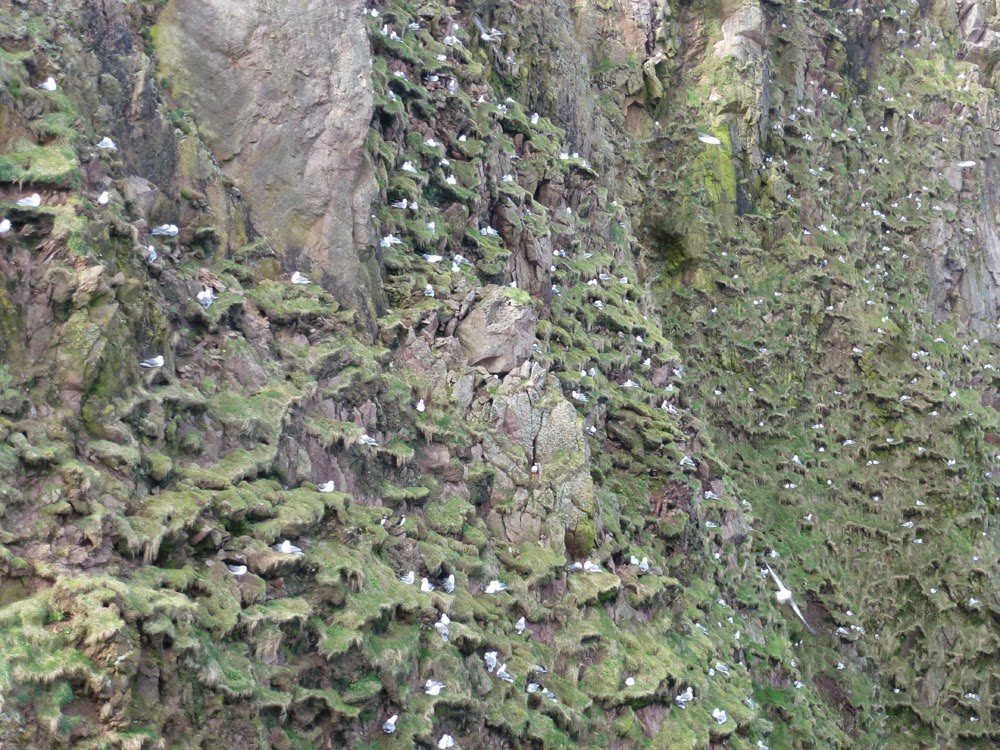After the mixed feelings of the 27th, when dipping a 5th for Britain was only partially compensated for by finding another 5th for Britain (I can find reference to records in 1985 in Cornwall, 1993 in Suffolk, 2006 on Shetland and the Scilly bird last autumn, so my previous reference to the Caspian being a 6th for Britain may have been wrong – let me know if you know otherwise) and a fantastic day’s birding, Sunday saw us determined to track down the Cretzschmar’s. We were given fresh hope when checking the references on the previous records saw mention of the fact they were both elusive (and indeed the first bird wasn’t seen for three days after being discovered) and that they often frequented heathery areas and cliff edges. Surely we hadn’t overlooked it yesterday by skimping on coverage of Brecks and the Rippack…? However, against that was the ‘big bird blindness’ that had affected the Wardening team so far, with the literally big birds (Crane, Buzzard and Hen Harrier) all being missed and now being joined by the ‘big bird’ in the more conventional birding sense of the term.
After the planned Tystie survey was abandoned due to fog, the Wardening team swept across the areas less well covered on 27th, but to no effect. Eventually, we decided on the best option being to get back to regular census and hope it would turn up somewhere for us…
Things started well after lunch, when the fog cleared for good and a ringtail Hen Harrier was picked up circling over Ward Hill, perhaps most significantly it was seen by the whole team – the ‘big bird blindness’ had gone, surely that was a good omen!
 |
| The second Hen Harrier of the spring circled over Ward Hill with a few Bonxies, but was generally ignored as it gained height and headed north towards Shetland. |
 |
| Cretzschmar's Bunting. An absolute stunner (photo by Roger Riddington). |
The morning text from Paul Harvey (one of the successful twitchers, along with Roger Riddington) that there was a flighty male Mandarin in South Harbour on 29th was, technically at least, the most significant from a Fair Isle point of view, being only the second island record (the Caspian Stonechat currently languishes as the 42nd Siberian Stonechat for the island, although it would be nice to think there was a chance of a split in the future…) but was dipped by a slightly groggy (the bunting celebrations perhaps going on a little later than ideal) FIBO team. I think it’s safe to say that, nice bird though I’m sure it was, if we were going to miss anything this week, that’s probably the one that we’re least concerned about!
The day went on to produce a similar total to the 28th, with the Cretzschmar’s and Caspian Stonechat both leading the line, and 2 Short-toed Larks, 4 Wrynecks, Great Grey Shrike, Blue-headed Wagtail (with a female flava Wag also present), Tree Sparrow and 2 Iceland Gulls all present, but there were perhaps a few more arrivals, with Short-eared Owl, Goldcrest, 2 Grey Wagtail, 4 Siskin, 12 Reed Buntings, 3 Pink-footed Geese and 35 Purple Sandpipers all new (or increased in numbers), along with a slight rise in Blackbirds and Robins.
 |
| Another gratuitous Cretzschmar's Bunting shot. After being so elusive for 24 hours, it showed very well in Boini Mire at times later (photo by Roger Riddington). |
 |
| The Caspian Stonechat went missing for a large part of 29th, before being seen at Burkle in the afternoon, and adding another species to Deryk's impressive garden list! |
 |
| Small numbers of Snow Buntings are also still scattered around, with the males appearing increasingly monochrome. |
The main surprise was a
Little Bunting near Steensi Geo, the first spring record since 2010. With early
records of Red-flanked Bluetail (possibly 2), Red-breasted Flycatcher and this,
there seems to be some backing of the theory that a good autumn for eastern migrants,
followed by a mild winter, may result in records of those species returning
north. With north-easterly winds for a day or two yet, will there be more, and
what will be next: Olive-backed Pipit? Yellow-browed Warbler? or something even
rarer? It feels like anything is
possible at the moment…




.jpg)
2.jpg)




.jpg)



.jpg)





.jpeg)



.jpeg)








.jpg)
.jpeg)

.jpg)



